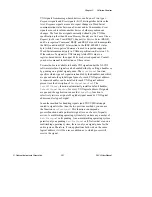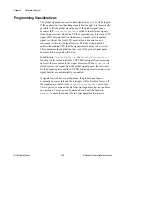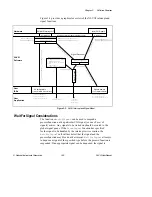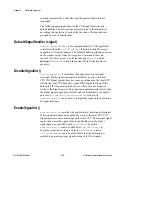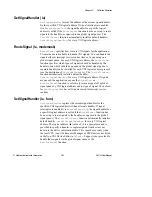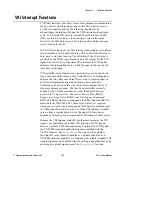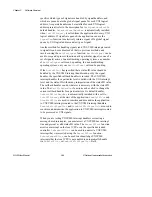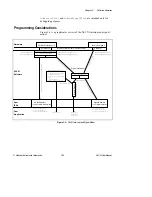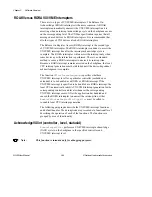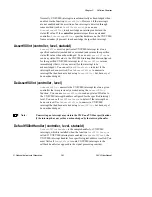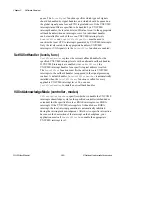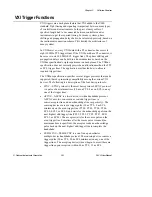
Chapter 3 Software Overview
NI-VXI User Manual
3-36
© National Instruments Corporation
VXIoutLR (reg, width, value)
VXIoutLR
writes a single byte, word, or longword to the local CPU
VXI/VME registers. On many CPUs, the local CPU VXI/VME
registers cannot be accessed from the local CPU in the A16 address
space window (due to hardware limitations). Another area in the local
CPU address space is reserved for accessing the local CPU VXI
registers.
VXIoutLR
is designed to write to these local VXI/VME
registers. The VXI/VME access privilege is not applicable but can be
assumed to be Nonprivileged Data. The byte order is Motorola. Unless
otherwise specified, writes should always be performed as words. This
function can be used to write application specific registers (A24 pointer
register, A32 pointer register, and so on) for the local CPU.
VXI Signal Functions
With these functions, VXI/VME bus master devices can interrupt
another device. VXI signal functions can specify the signal routing,
manipulate the global signal queue, and wait for a particular signal
value (or set of values) to be received.
VXI signals are a basic form of asynchronous communication used by
VXI/VME bus master devices. A VXI signal is a 16-bit value written to
the Signal register of a VXI message-based device. Normally, the write
to the Signal register generates a local CPU interrupt, and the local
CPU then acquires the signal value in some device-specific manner. All
National Instruments hardware platforms have a hardware FIFO to
accumulate signal values while waiting for the local CPU to retrieve
them. The format of the 16-bit signal value is defined by the VXIbus
specification and is the same as the format used for the VXI interrupt
status/ID word that is returned during a VXI interrupt acknowledge
cycle. All VXI signals and status/ID values contain the VXI logical
address of the sending device in the lower 8 bits of the VXI signal or
status/ID value. The upper 8 bits of the 16-bit value depends on the
VXI device type.
Note:
For VME bus master devices, the VXI signal register can be considered a
general purpose notification register. Although the
VXIbus
specification
defines the use for this register, you can program the application on the
controller to respond to write to this register in any manner you require.
















